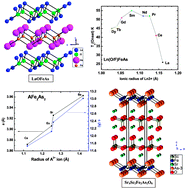The iron-age of superconductivity: structural correlations and commonalities among the various families having –Fe–Pn– slabs (Pn = P, As and Sb)
Abstract
The fascination of mankind towards a sudden change of a property, like colour, shape, elasticity, viscosity, electrical conductivity and magnetism, is well known. If the change in property is such that it leads to disapperance of an existing property or development of a new property then the effect is magical. It is for this reason that superconductivity remains an enigma for scientists for over a century after Kammerlingh Onnes discovered that the electrical resistance of mercury falls to zero below a temperature of 4.2 K. Since then scientists have been enchanted by superconductivity. Over these hundred years attempts have been made to discover materials which show this effect at higher temperatures. After a very exciting period of Cu oxide superconductors (1986–1993) there has been a lull in the search for high Tc materials. The discovery of superconductivity in 2008 at 26 K in LaOFeAs (F-doped) has renewed the excitement in the field of superconductivity. This breakthrough in an Fe-containing compound led to the discovery of several new families of Fe-based superconductors having either pnictogens (P, As) or chalcogen (Se, Te) of the type AFFeAs (A = alkaline-earth metal), AFe2As2, AFeAs (A = alkali metals), A3M2O5Fe2As2 (M = transition metals) and A4M2O6Fe2As2. This review article discusses in detail the structural aspects of these new Fe-based superconductors which primarily consist of edge-shared distorted FeX4 (X = pnictogen and chalcogen) tetrahedra and these tetrahedral layers are reponsible for enabling superconductivity. Extremely large upper critical field (>200 Tesla) of these superconductors make them promising for high field application. Structural commonalities and differences among different families of these superconductors have been outlined. We also discuss the common features and differences with the copper-oxide based superconductors. Here we have discussed all the Fe-based oxypnictide families (like LnOFePn, AFe2Pn2, AFFePn and A4M2M′Fe2As2O6etc.) known today and have also included the phosphides and antimonides other than the arsenides. We have in addition discussed in detail the various factors like pressure, hole and electron doping, transition metal doping, which have not been reviewed earlier.


 Please wait while we load your content...
Please wait while we load your content...